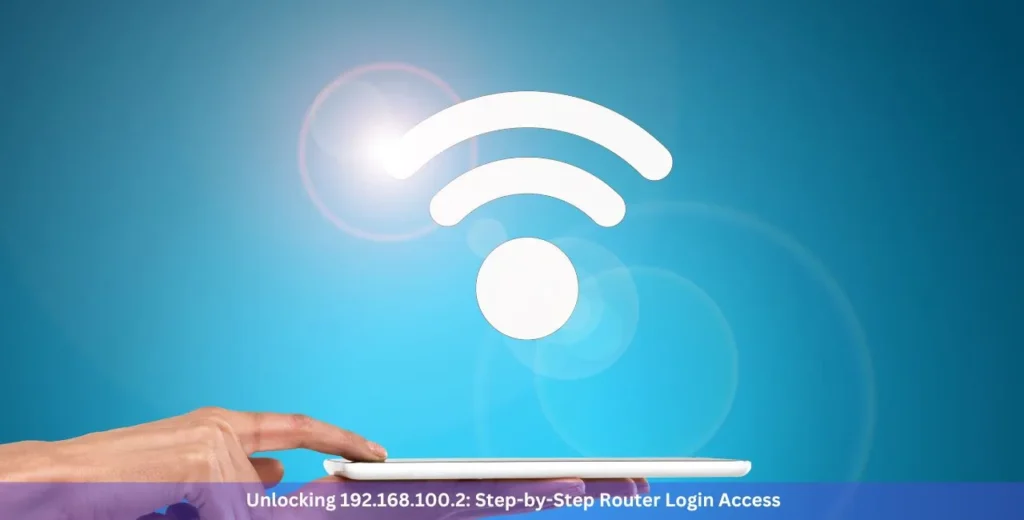In today’s digital age, IP addresses play a fundamental role in how our devices connect and communicate over networks. Whether you’re setting up a new router at home or troubleshooting network issues, understanding IP addresses is key. Among the many IP addresses that exist, the address 192.168.100.2 is often encountered, particularly in local networks. But what exactly is this IP address, and why is it important? This article delves into the specifics of 192.168.100.2, exploring its uses, how it functions within a network, and how you can access and manage devices that use this IP address. Whether you’re a tech novice or someone with more experience, understanding 192.168.100.2 can help you better manage your home or office network with ease.
What is 192.168.100.2 IP Address?
IP addresses are essential components of networking that allow devices to communicate with each other over the internet or local networks. The IP address 192.168.100.2 falls within a specific range of IP addresses reserved for private use. Specifically, it’s part of the broader 192.168.x.x range, a subset of IP addresses that are commonly used in home and office networks.
The address 192.168.100.2 is often assigned to devices such as routers and modems, allowing users to access the device’s management interface through a web browser. Unlike public IP addresses, which are used to identify devices on the global internet, private IP addresses like 192.168.100.2 are only valid within a local network, meaning they cannot be accessed from outside that network.
Read Also: DigitalNewsAlert.com: Discover the Future of News | LetFlix The New Streaming Giant Revolutionizing Online Entertainment
What is 192.168.100.2 Used For?
The primary use of 192.168.100.2 is for network management. When this IP address is assigned to a router or modem, it serves as the gateway through which network administrators can configure and manage the network. This could involve changing the Wi-Fi network name (SSID), adjusting security settings, or managing connected devices.
In many cases, 192.168.100.2 is the default IP address set by the manufacturer for certain models of routers or modems. This allows users to easily access the device’s interface by typing 192.168.100.2 into their web browser’s address bar.
Read Also: Self-Control Is Strength. Calmness Is Mastery. You – Tymoff | Drew Brees Makes His NBC Debut, Internet Amazed by His New Hair
Why Are Addresses Like 192.168.100.2 So Unique?
Addresses like 192.168.100.2 are unique in the sense that they are part of the private IP address range. Unlike public IP addresses, which must be unique across the entire internet, private IP addresses only need to be unique within a single local network. This allows multiple networks to use the same private IP addresses without conflict, as these addresses are not routable on the public internet.
The use of private IP addresses like 192.168.100.2 helps conserve the limited number of public IP addresses available and adds a layer of security since these addresses are not accessible from outside the local network. They are ideal for home and office environments where multiple devices need to communicate internally without the need for a unique public IP address for each device.
Read Also: Alan Jackson Hospitalized: Everything You Need to Know | 10.16.100.244 IP Address Configuring, and Troubleshooting
Log in Instructions of 192.168.100.2 to Manage Routers and Wi-Fi Modems
Accessing the management interface of your router or modem through 192.168.100.2 is a straightforward process. Here’s a step-by-step guide:
- Connect to the Network: Ensure your device (computer, tablet, or smartphone) is connected to the router’s network, either via Wi-Fi or Ethernet cable.
- Open a Web Browser: Launch a web browser such as Chrome, Firefox, or Edge.
- Enter the IP Address: In the address bar, type
http://192.168.100.2and press Enter. - Login Credentials: You will be prompted to enter a username and password. These are typically set to default values like
adminfor both fields. If you’ve changed these credentials in the past and can’t remember them, you may need to reset the router to factory settings. - Access the Interface: Once logged in, you can navigate through the router’s settings to manage various aspects of your network.
- Troubleshooting: If you’re unable to access the login page, ensure that 192.168.100.2 is indeed your router’s IP address and that your device is properly connected to the network.
Read Also: PS2 BIOS Downloading Guide: Everything You Need to Know | UNFGaming.net: A Comprehensive Overview of ESPORTS And Retro Gaming
Is My Router’s IP Address 192.168.100.2?
To determine if 192.168.100.2 is your router’s IP address, you can follow these steps:
- Windows:
- Open Command Prompt.
- Type
ipconfigand press Enter. - Look for the “Default Gateway” under your active network connection. If it shows 192.168.100.2, that’s your router’s IP address.
- Mac:
- Open System Preferences.
- Go to “Network” and select your active network connection.
- Click on “Advanced” and then the “TCP/IP” tab. The router’s IP address will be listed next to “Router.”
- Mobile Devices:
- Access your Wi-Fi settings.
- Tap on the network you’re connected to and look for the IP address listed as the router or gateway.
If your router’s IP address is not 192.168.100.2, it could be a different address like 192.168.0.1 or 192.168.1.1, which are also commonly used by routers.
Read Also: Cookape Can Grow Real Instagram Followers | Homeworkify A Smart Way to Get Homework Done
Accessing the Router’s Operation
Once you’ve logged in to your router using 192.168.100.2, you’ll have access to a variety of settings and configurations. Common areas you might manage include:
- Wi-Fi Settings: Change the network name (SSID) and password, adjust security protocols, or set up a guest network.
- Device Management: View all devices connected to your network, assign static IP addresses, or set parental controls.
- Security Settings: Update firmware, configure firewall settings, or enable network encryption to protect your network from unauthorized access.
- Network Settings: Modify DHCP settings, set up port forwarding, or adjust the router’s IP address range.
It’s essential to secure your router’s settings by changing the default username and password after your first login. This prevents unauthorized users from accessing your network.
Read Also: Blog.Studybahasainggris.com A Platform To Mastering The English | Exploring the Ultimate Guide to MyFavouritePlaces.org
Conclusion
Understanding and using the 192.168.100.2 IP address is crucial for managing your home or office network. Whether you need to configure Wi-Fi settings, update security protocols, or manage connected devices, knowing how to access and navigate your router’s management interface via 192.168.100.2 empowers you to maintain a secure and efficient network.
FAQs
-
What should I do if I can’t access 192.168.100.2?
Ensure your device is connected to the correct network and that 192.168.100.2 is indeed the correct IP address for your router.
-
Can I change my router’s IP address from 192.168.100.2?
Yes, you can change your router’s IP address through the management interface, though it’s usually not necessary unless you have specific network requirements.
-
What happens if two devices have the same IP address, like 192.168.100.2?
This creates an IP conflict, causing connectivity issues. You’ll need to change one of the device’s IP addresses to resolve the conflict.



